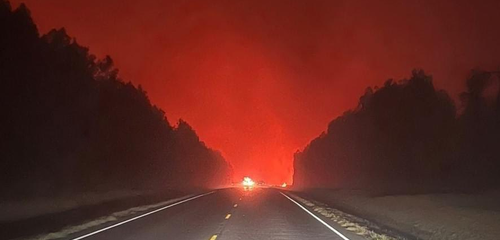Record heat driving severe storms, droughts, fires: Study

Canberra, Jan 11: Record-high global temperatures in 2023 exacerbated droughts, floods and wildfires, a, international study led by Australian National University (ANU) researchers revealed on Thursday.
The study, which was published by the Global Water Monitor Consortium, found that rising sea surface and air temperatures are driving the growing intensity and strength of monsoons, cyclones and other storm systems, reports Xinhua news agency.
Albert van Dijk, lead author of the study from ANU’s Centre for Water and Landscape Dynamics and chair of the consortium, said in a statement that their findings prove that recent intense storms around the world are part of a global pattern.
“In 2023, we saw cyclones behave in unexpected and deadly ways. The longest-lived cyclone ever recorded battered southeastern Africa for weeks. Warmer sea temperatures fuelled those freak behaviors, and we can expect to see more of these extreme events going forward,” he said.
Data published by the European Union’s Copernicus Climate Change Service (C3S) on Tuesday confirmed that 2023 was Earth’s hottest year on record, with average temperatures 1.48 degrees Celsius above the long-term average before the mass burning of fossil fuels.
According to the study from the Global Water Monitor Consortium, which comprises public and private institutions from around the world, 77 countries experienced their highest average annual temperature for at least 45 years in 2023.
Van Dijk said that in addition to the increasing intensity of rainfall events, droughts are also becoming more frequent and developing faster, causing crop failure and destructive wildfires.
“Extremely hot and dry conditions inflicted extensive ecological damage on the world’s largest forests. Massive wildfires ravaged Canada during the northern summer, while the Amazon rainforest and rivers rapidly descended into severe drought in late 2023,” he said.
The consortium’s findings were based on observations from thousands of ground stations around the world and satellites that provided real-time data on rainfall, air temperature, flooding, lake volumes, air humidity, vegetation, river flows and soil and groundwater conditions.
(IANS)






